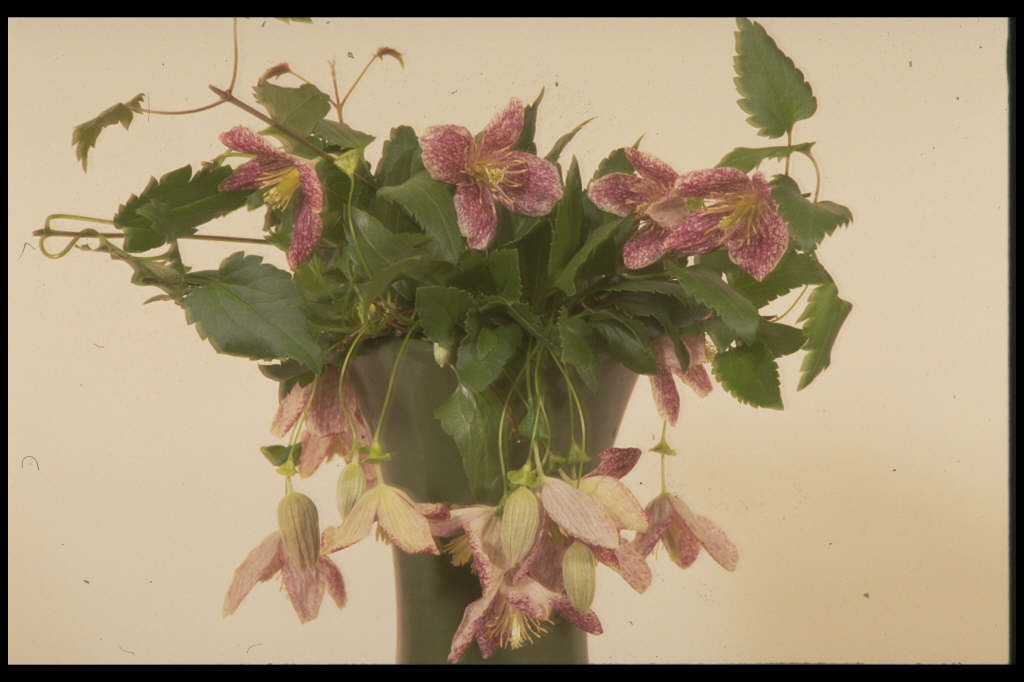Clematis cirrhosa var. purpurascens 'Freckles' (C)

clematis 'Freckles'
A large evergreen climber about 3.5m tall, with divided, lobed and toothed glossy dark green leaves tinged bronze in winter. Single, large, pale yellow flowers to 10cm in width, heavily speckled red within, during late autumn, winter and early spring, followed by silky seedheads
Size
Ultimate height
2.5–4 metresTime to ultimate height
2–5 yearsUltimate spread
0.5–1 metresGrowing conditions
Moisture
Moist but well–drainedpH
Alkaline, NeutralColour & scent
| Stem | Flower | Foliage | Fruit | |
| Spring | Yellow Red | Green | ||
|---|---|---|---|---|
| Summer | Green | Grey Silver | ||
| Autumn | Green | |||
| Winter | Yellow Red | Green Bronze |
Position
- Full sun
Aspect
South–facing or West–facing
Exposure
Sheltered Hardiness
H4Botanical details
- Family
- Ranunculaceae
- Native to GB / Ireland
- No
- Foliage
- Evergreen
- Habit
- Climbing
- Potentially harmful
- Skin irritant. Wear gloves and other protective equipment when handling. Pets (rabbits): Harmful if eaten. For further information and contact numbers regarding pets, see the HTA guide to potentially harmful plants
- Genus
Clematis can be deciduous or evergreen shrubs or herbaceous perennials, mostly climbing by twining leaf-stalks, and often with showy flowers. Some have attractive fluffy seedheads in autumn
- Name status
Accepted
- Horticultural Group
- Cirrhosa Group clematis are evergreen woody climbers with bell to bowl-shaped single flowers, produced from late autumn to early spring on the previous year's growth
How to grow
Cultivation
A cultivar for a warm, sheltered position, it thrives in any fertile, well-drained soil and plant with the crown at soil level. Keep the base shaded and cool by the careful positioning of plants. In cold areas, grow in a container and overwinter in a greenhouse or conservatory. See clematis cultivation for further information
Propagation
Propagate by softwood cuttings in spring, semi-ripe cuttings in early summer or propagate by layering in late winter or early spring
Suggested planting locations and garden types
- City and courtyard gardens
- Cottage and informal garden
- Mediterranean climate plants
- Patio and container plants
- Wildlife gardens
- Climber and wall shrubs
- Wall side borders
Pruning
Pests
May be susceptible to aphids, snails and caterpillars; petals may be eaten by earwigs
Diseases
May be susceptible to honey fungus (rarely), clematis wilt (rarely) and clematis slime flux
Get involved
The Royal Horticultural Society is the UK’s leading gardening charity. We aim to enrich everyone’s life through plants, and make the UK a greener and more beautiful place.
